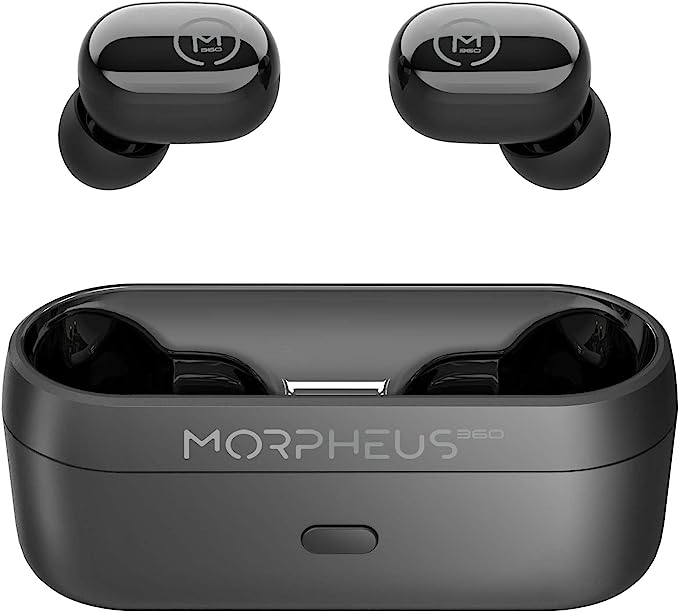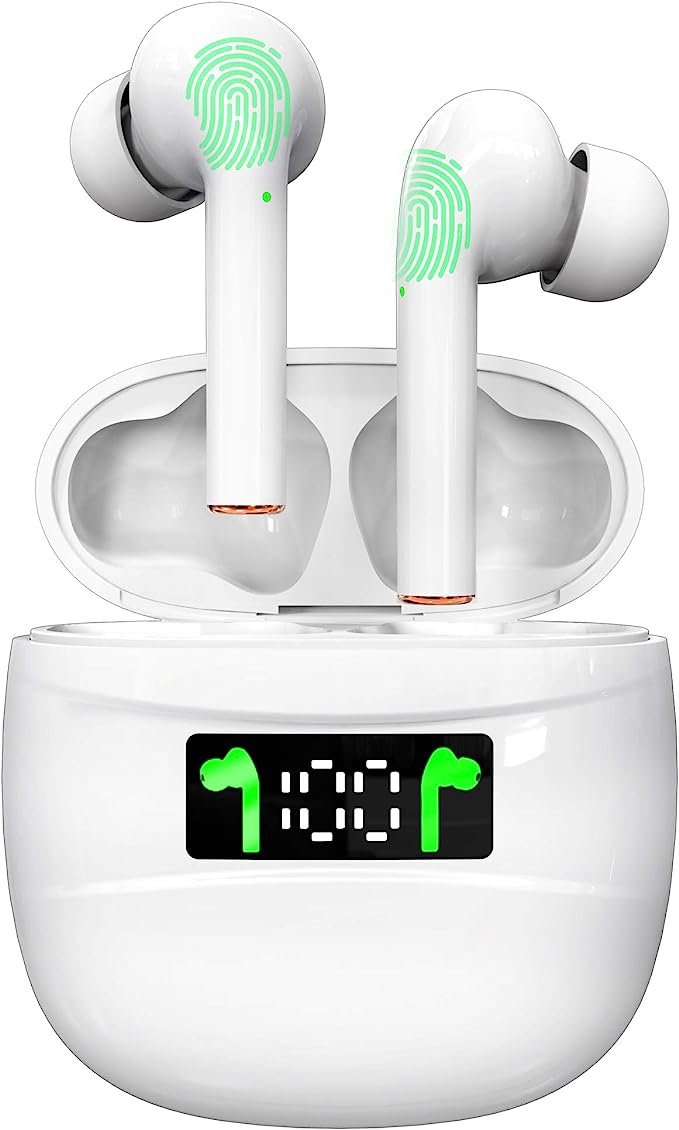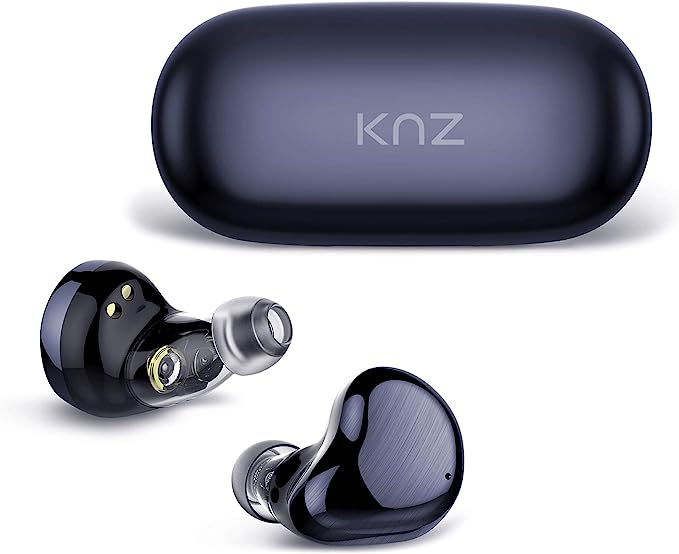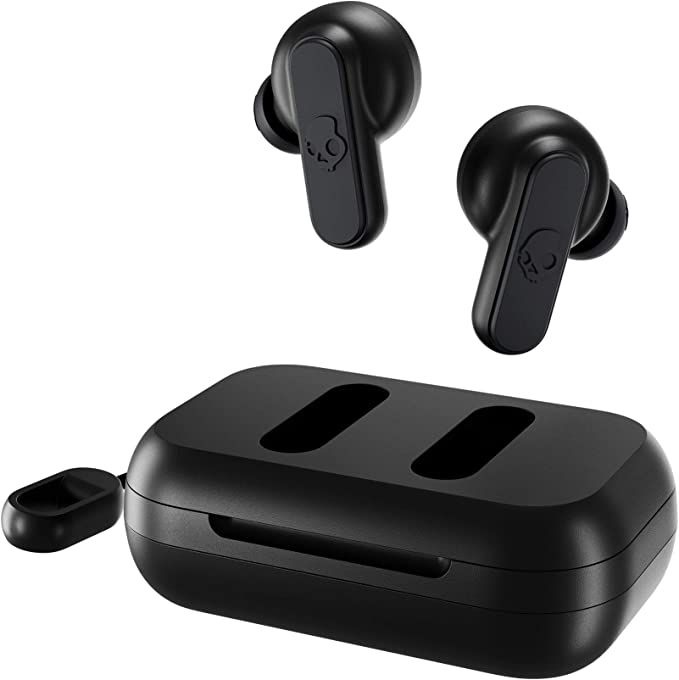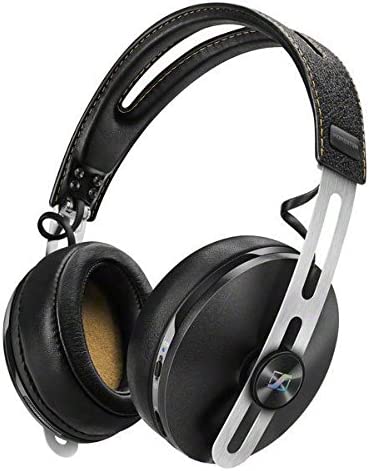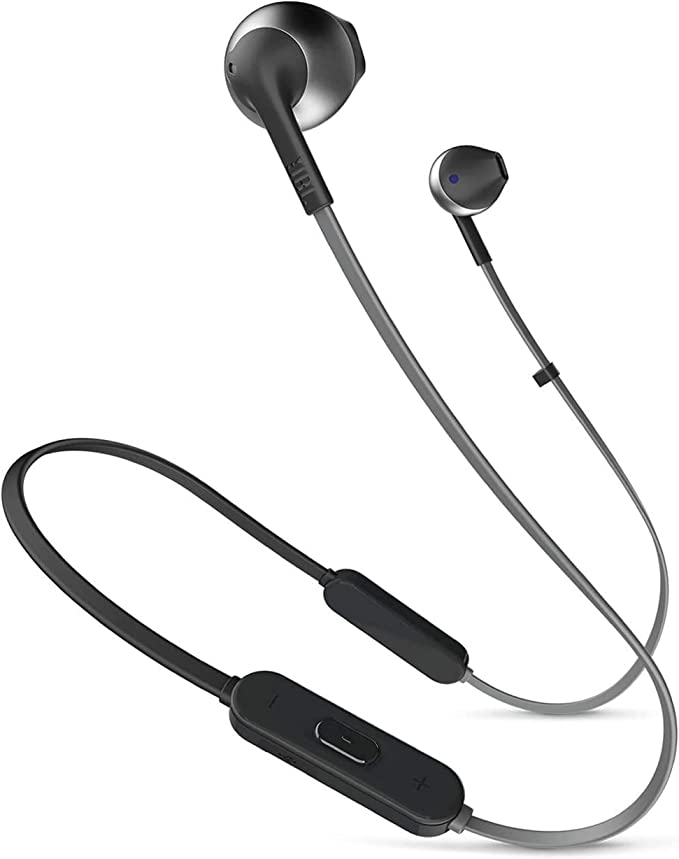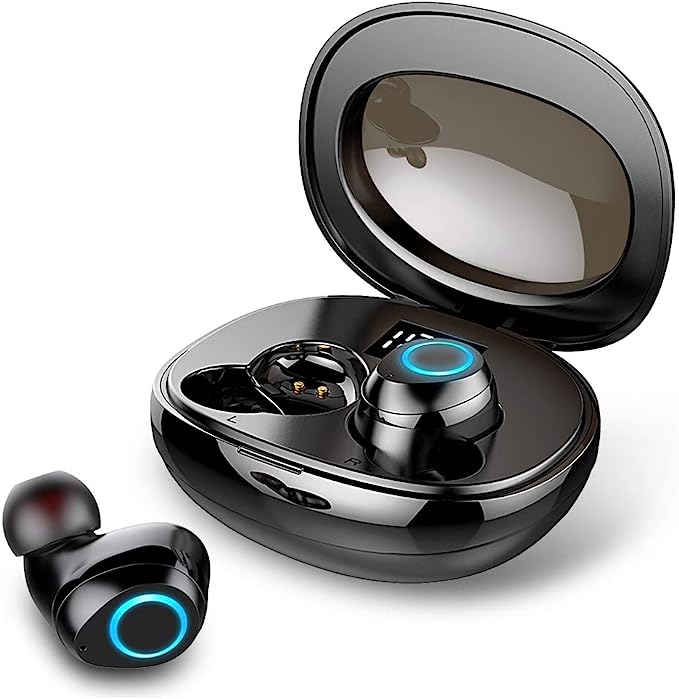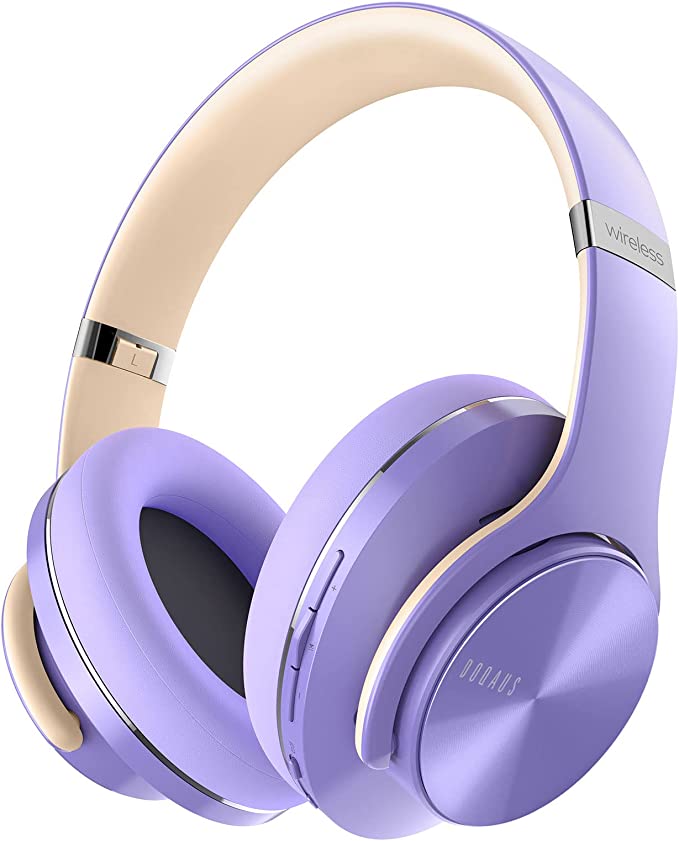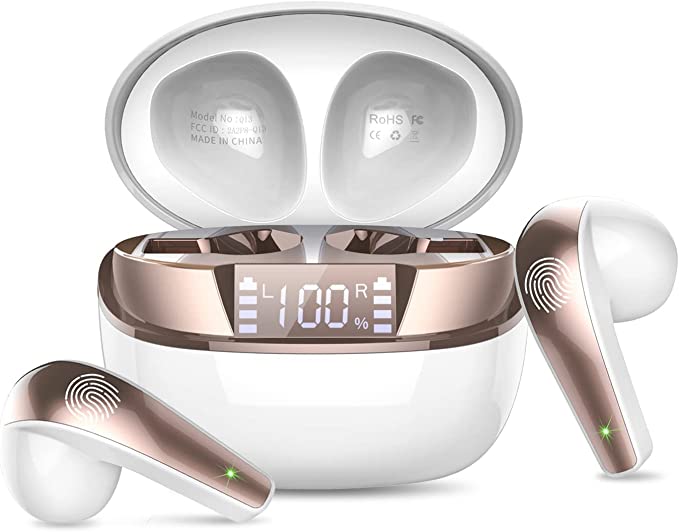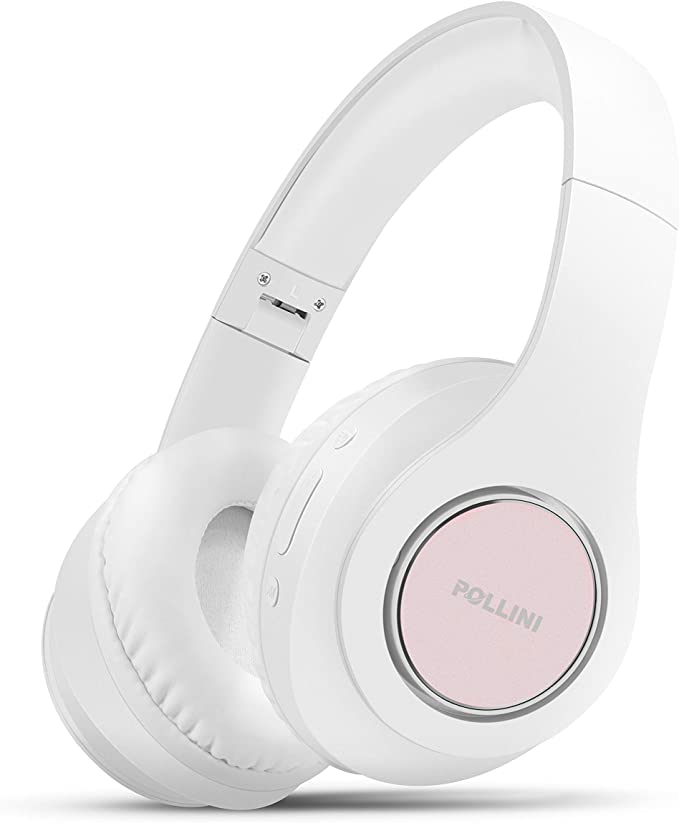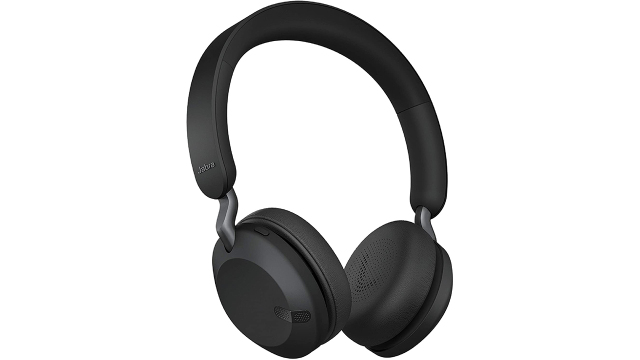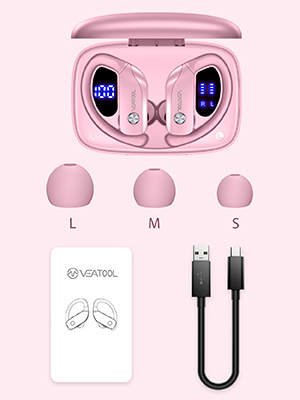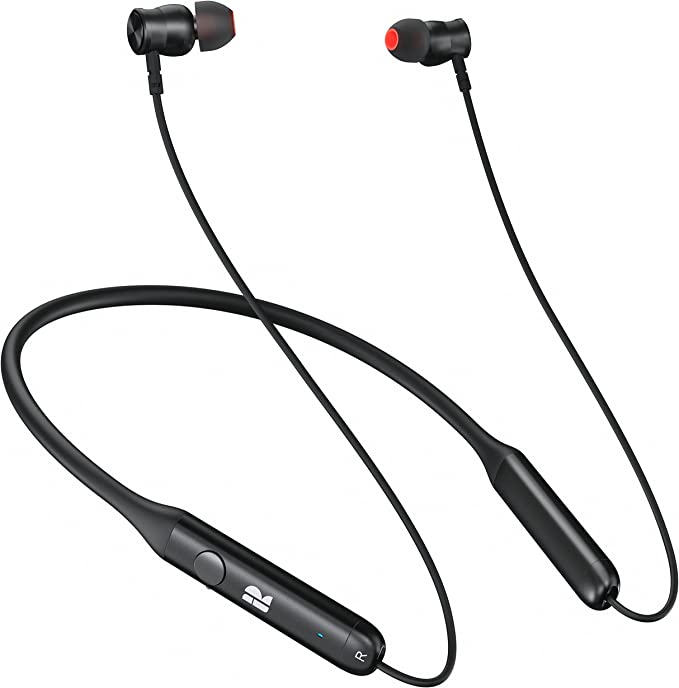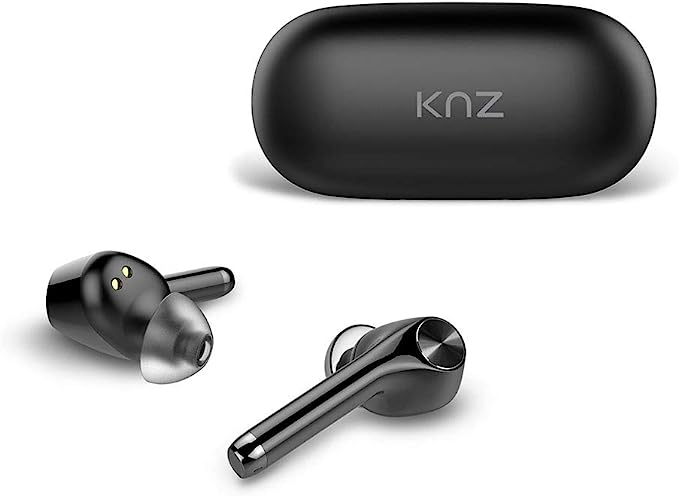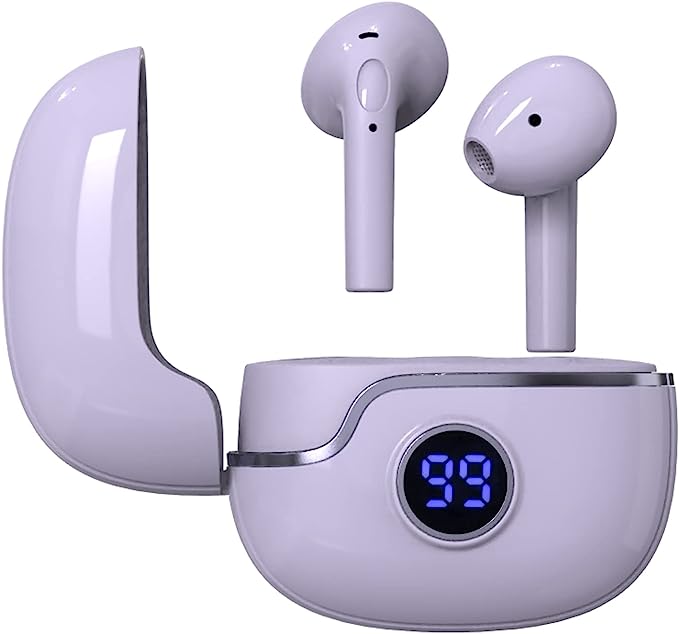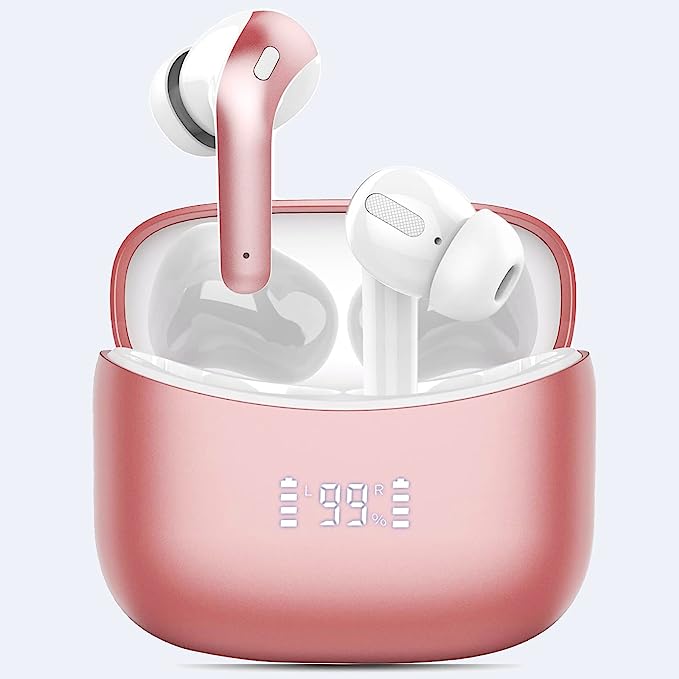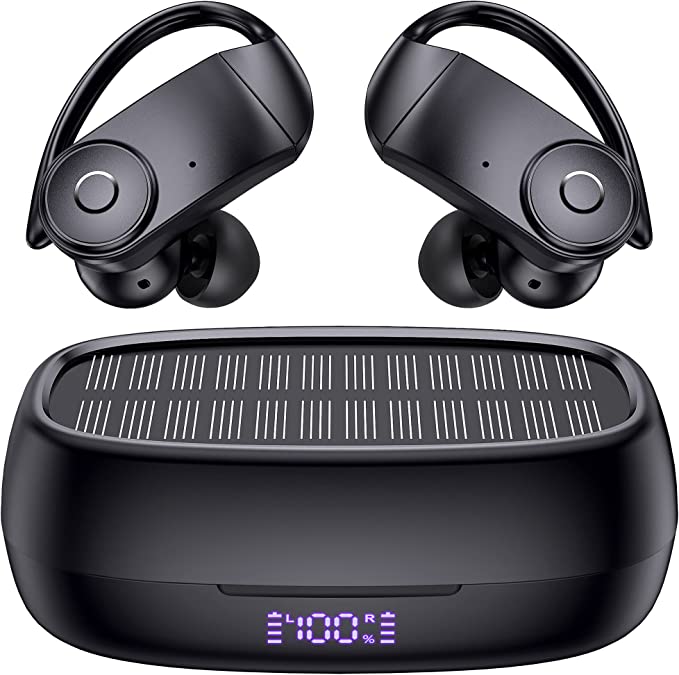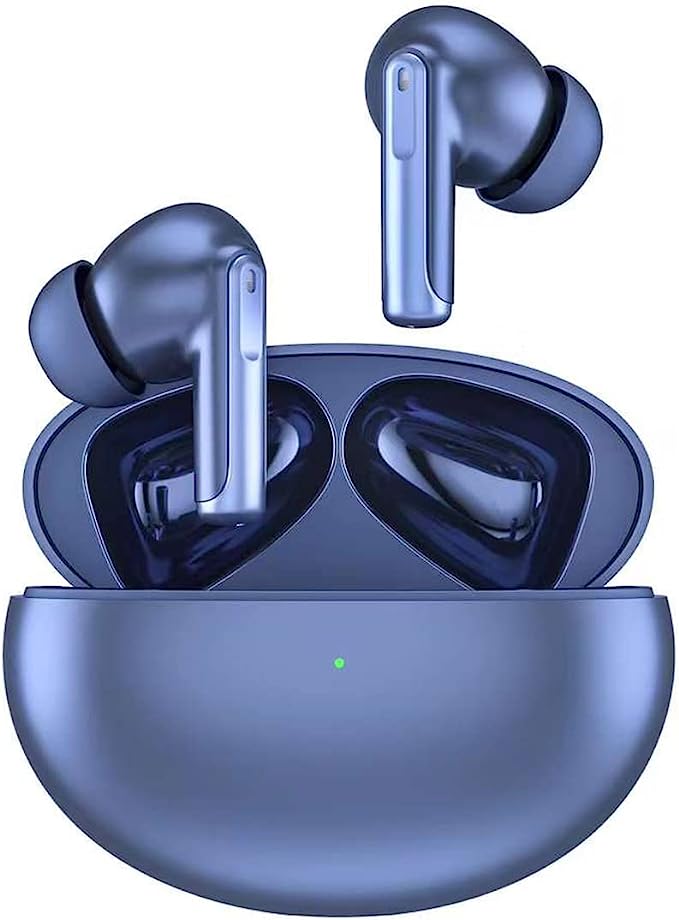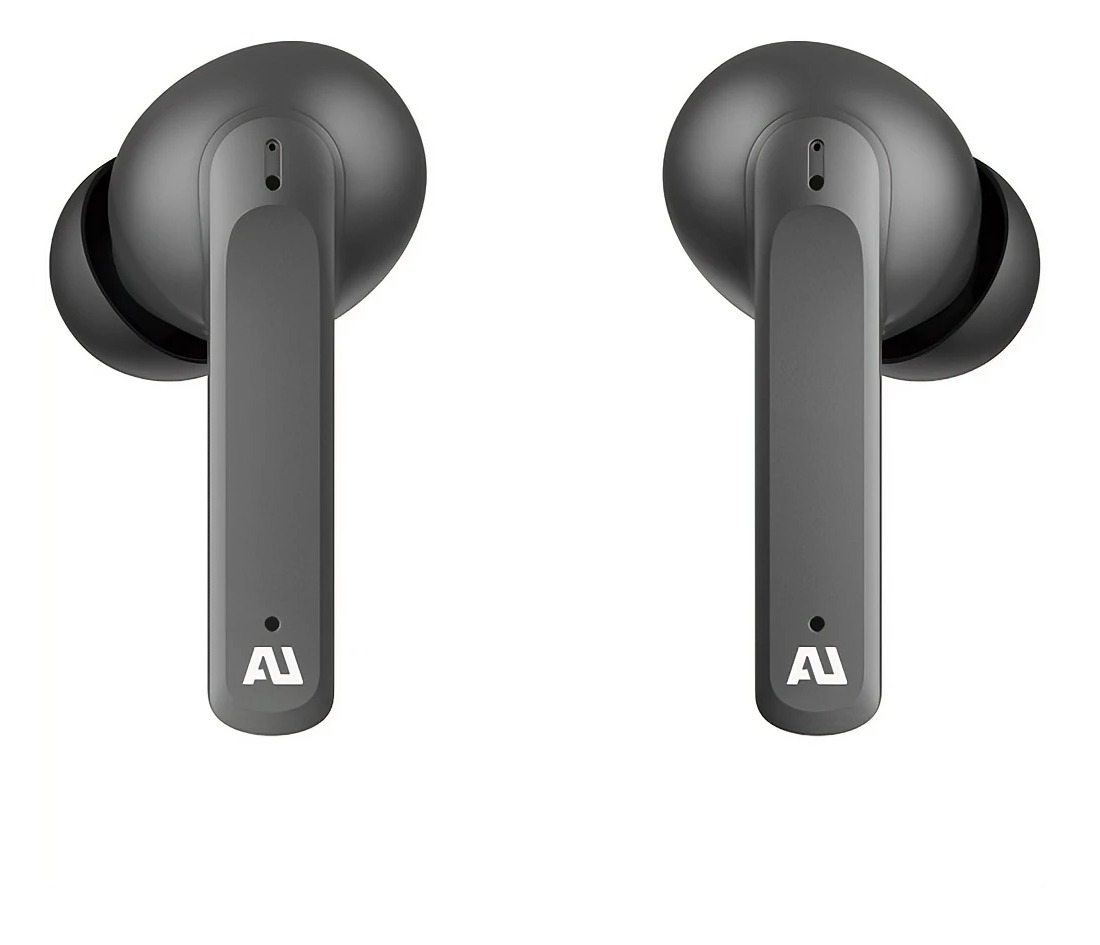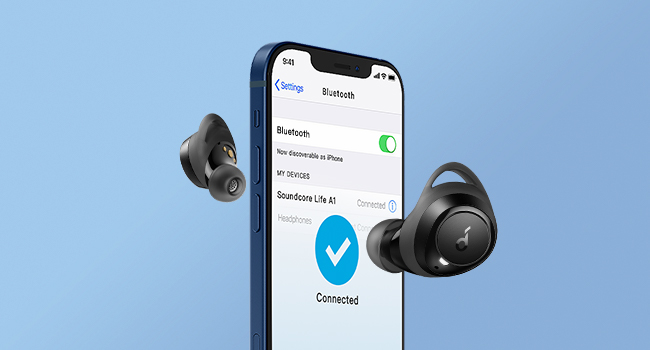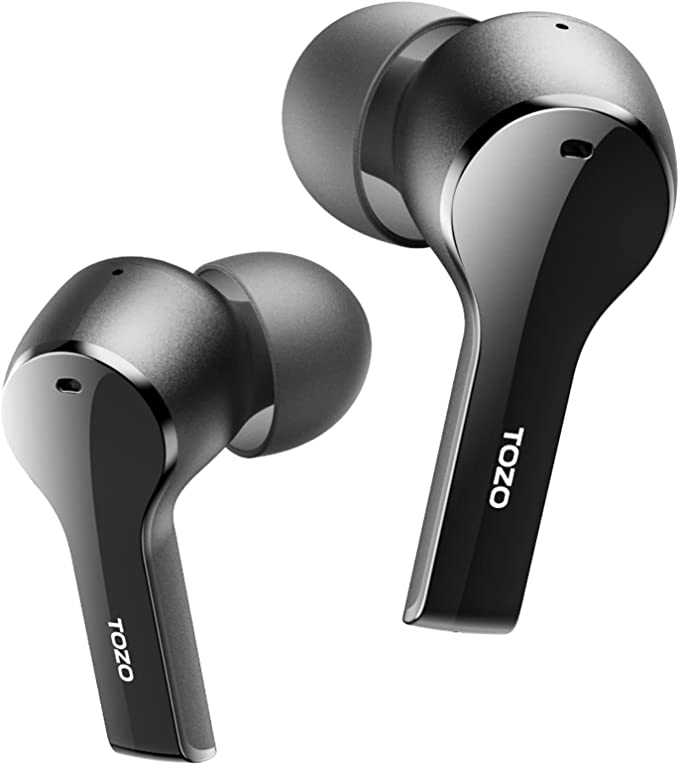CAPOXO X17 True Wireless Earbuds: The Science Behind Seamless Sound and All-Day Power
Update on May 14, 2025, 11:31 a.m.
Cast your mind back, not too long ago, to the era of personal audio often defined by a frustrating web of wires. Untangling headphone cords was a daily ritual, a minor but persistent snag in the rhythm of our lives. Then, almost imperceptibly, a quiet revolution began, culminating in the sleek, unobtrusive freedom of True Wireless Stereo (TWS) earbuds. These tiny companions have transformed how we consume podcasts on a busy commute, find focus with music in a bustling office, or stay motivated during a vigorous workout. They represent a paradigm shift, a near-complete liberation of our listening experience.
Today, we’ll embark on an exploration of the remarkable science and engineering that make these miniature marvels possible. We’ll use the features commonly found in modern TWS earbuds, such as those described for the CAPOXO X17, not as a product review, but as a gateway – a practical lens through which to understand the intricate technologies at play. It’s worth noting, as we begin, that any specific product’s performance is best assessed through dedicated laboratory testing; our journey here is to illuminate the scientific principles behind the features they claim, to appreciate the ingenuity packed into such a compact form.

The Invisible Handshake: Decoding Bluetooth 5.0 and the Dance of Connection
At the very heart of the true wireless experience lies a technology many of us use daily yet perhaps don’t deeply ponder: Bluetooth. When a product like the CAPOXO X17 mentions “Bluetooth 5.0,” it’s not merely a version number; it signifies a specific capability in the invisible dance of data that streams your favorite audio. This standard has a surprisingly noble, if whimsical, namesake – Harald “Bluetooth” Gormsson, a 10th-century Danish king famed for uniting disparate Danish tribes. Fittingly, the Bluetooth technology, conceived in the late 1990s by engineers at Ericsson in Sweden, was designed to unite different electronic devices over short distances without the clutter of cables.
So, how does this “invisible handshake” actually work? Bluetooth operates using short-wavelength UHF radio waves in the Industrial, Scientific, and Medical (ISM) radio band from 2.400 to 2.485 GHz. To avoid interference with other devices using this crowded band (like Wi-Fi routers or microwave ovens), Bluetooth employs a clever technique called frequency-hopping spread spectrum. Essentially, the signal rapidly hops between multiple frequencies within the band, making it robust and secure.
Bluetooth 5.0, launched in 2016, brought significant improvements over its predecessors, particularly relevant for audio devices. It offered the potential for double the speed, four times the range, and eight times the data broadcasting message capacity compared to Bluetooth 4.2. For TWS earbuds, this translates to more stable connections, reduced latency (the perceptible delay between a sound being initiated on your phone and you hearing it), and improved power efficiency, helping those tiny batteries last longer. When the X17 claims “stable connectivity and high speed transmission,” it’s these underlying enhancements in Bluetooth 5.0 it seeks to leverage. The “effortless pairing” feature, where earbuds automatically power on and connect to a known device when their case is opened, is a sophisticated choreography managed by the Bluetooth chipset, remembering previous connections and quickly re-establishing them. Think of Bluetooth 5.0 not just as a wireless link, but as your personal, highly efficient, and increasingly reliable invisible audio courier.

Crafting Your Personal Soundscape: The Miniature Marvels of Drivers and Acoustics
Once a stable connection is established, the next critical task for an earbud is to reproduce sound faithfully. This monumental job, in such a diminutive package, falls to the speaker driver. The CAPOXO X17, for instance, mentions a “10mm speaker driver unit.” But what does that truly mean, and how does this tiny component generate the rich tapestry of sound that can move us?
At its core, a speaker driver is a type of transducer—a device that converts energy from one form to another. In this case, it converts electrical audio signals sent from your phone or music player into mechanical vibrations, which then create sound waves in the air that your eardrum perceives. Most TWS earbuds, including likely those with a 10mm unit like the X17, use dynamic drivers. Imagine a miniature, precision-engineered piston: a diaphragm (a thin, semi-rigid membrane) is attached to a coil of fine wire (the voice coil) which sits within a magnetic field created by a small, powerful magnet. When an electrical audio current flows through the voice coil, it generates a fluctuating magnetic field that interacts with the permanent magnet, causing the coil and the attached diaphragm to vibrate rapidly back and forth. These vibrations displace air, creating pressure waves—the very essence of sound.
The size of the driver, here 10mm, can influence its acoustic properties. Generally, a larger diaphragm surface area allows the driver to move more air, which can be particularly beneficial for reproducing lower frequencies, contributing to what might be described as “mellow bass.” Achieving “clear treble” and an overall “Hi-Fi Stereo Sound” (High Fidelity, meaning a faithful reproduction of the original audio with low distortion and a wide frequency response) is the holy grail for audio engineers. It involves a delicate balance of driver material, magnet strength, voice coil design, and the acoustic properties of the earbud housing itself.
The “half in-ear acoustic structure” mentioned for the X17 also plays a significant role. Unlike designs that create a tight seal deep within the ear canal (offering more passive noise isolation), a half-in-ear design typically rests more gently in the outer ear. This can offer a different sound presentation, sometimes perceived as more “open” or “airy,” and it allows for a degree of ambient sound awareness. This can be a conscious design choice, balancing immersive listening with the need to stay connected to your surroundings, perhaps for safety during an urban run or to hear a colleague in the office. The driver, then, is like a miniature orchestra, and the earbud’s acoustic design is its meticulously tuned concert hall.

The Unseen Engine: Powering Days of Audio with Modern Battery and Charging Science
All this sophisticated technology needs power, and providing sufficient, long-lasting energy in such a compact form factor is one of the great challenges in wearable technology. The solution, for devices like the CAPOXO X17 and countless other TWS earbuds, lies in Lithium Polymer (Li-Po) batteries. These are a type of rechargeable Lithium-ion battery, but instead of a liquid electrolyte, they use a polymer electrolyte. This allows them to be made in very thin and flexible shapes, making them ideal for the constrained spaces within earbuds and their charging cases. Li-Po batteries also offer high energy density, meaning they can store a relatively large amount of energy for their size and weight.
When a product like the X17 claims a “35H Playtime” – typically broken down into a certain number of hours from the earbuds themselves (e.g., “5 hours of playtime on single charge”) and additional charges from the case (e.g., “provides extra 30 hours playtime with charging case”) – it’s showcasing this synergistic battery strategy. The earbuds contain tiny batteries for their immediate operation, while the charging case houses a significantly larger battery, acting as a portable power bank to recharge the earbuds multiple times on the go. A “smart LED digital display” on the case, as mentioned for the X17, provides crucial visibility into the remaining charge of both the earbuds and the case, allowing users to manage their power needs proactively.
Recharging these devices has also seen innovation. The support for “Wireless Charging” in the X17 case means it can be placed on a compatible charging pad (often adhering to the Qi standard, though not explicitly stated for the X17, it’s the dominant industry standard) and receive power without physical cables. This convenience is enabled by the principle of electromagnetic induction. A transmitter coil in the charging pad creates an oscillating magnetic field, which in turn induces an alternating current in a receiver coil embedded within the earbud case, thus charging its battery. It’s like an invisible energy bridge.
Alongside wireless convenience, “Type-C Quick Charge” offers another modern solution. The USB Type-C connector is favored for its reversible design (no more fumbling to plug it in the right way) and its support for higher power delivery standards like USB Power Delivery (USB PD). While “Quick Charge” can be a somewhat generic term unless a specific standard (like Qualcomm Quick Charge or USB PD wattage) is cited, it generally implies that the device can draw power at a faster rate than older USB standards, significantly reducing charging times when used with a compatible charger.

Engineered for Life’s Cadence: The Convergence of Ergonomics, Control, and Resilience
Beyond the core functions of connection, sound, and power, the usability of TWS earbuds is profoundly influenced by their physical design and durability. An “ergonomic half-in-ear design,” as described for the CAPOXO X17, coupled with a low weight (claimed as “only 3.5g of each earbud”), aims to enhance long-term comfort and stability. Ergonomics, the science of designing products to fit the human body and its cognitive abilities, is paramount here. Engineers use anthropometric data (measurements of the human body) and extensive testing to shape earbuds that sit securely yet comfortably, minimizing pressure points, especially during extended wear or dynamic activities like running or workouts.
User interaction is another key aspect. The X17 features a “physical button on the wireless headphones” for “One-key Control.” While some earbuds opt for touch-sensitive surfaces, physical buttons provide distinct tactile feedback, which can be more reliable, especially with sweaty fingers or when wearing gloves. This button typically allows users to manage music playback (play/pause, skip tracks), handle calls (answer/reject), and often activate a paired smartphone’s voice assistant, like Siri or Google Assistant.
Finally, for earbuds designed to accompany an active lifestyle, resilience against environmental factors is crucial. The “IPX5 Sweatproof” rating claimed by the X17 is a standardized measure of this. IP stands for Ingress Protection, and the ratings are defined by the International Electrotechnical Commission (IEC) in standard 60529. The first digit (replaced by ‘X’ here) relates to protection against solid particle ingress (like dust), with ‘X’ meaning it hasn’t been specifically tested or rated for that. The second digit, ‘5’ in IPX5, signifies protection against liquids. Specifically, an IPX5 rating means the enclosure is protected against low-pressure water jets projected by a nozzle (6.3 mm) from any direction. In practical terms, this makes the earbuds resistant to sweat and light rain, offering peace of mind during workouts or an unexpected drizzle, though it doesn’t mean they are designed for submersion in water. This IP rating is like a personal, invisible force field for the delicate electronics housed within.

Coda: The Invisible Symphony – Appreciating the Science in Your Ears
The CAPOXO X17 True Wireless Earbuds, much like their contemporaries that nestle into millions of ears worldwide, are far more than just simple accessories. They are compact marvels of modern engineering, each pair a testament to decades of scientific advancement across diverse fields – from the intricacies of radio wave propagation in Bluetooth, the electroacoustic wizardry that transforms digital bits into emotive sound, the cutting-edge chemistry within their tiny batteries, to the material science and ergonomic principles that ensure they are both durable and comfortable.

The seamless audio experience we often take for granted is, in reality, an invisible symphony conducted by a host of sophisticated technologies working in concert. Reflecting on the journey of a song – from a server farm, through the airwaves to our phones, then wirelessly to these tiny earpieces, where it’s translated into precise vibrations that recreate music in our ears – is to appreciate a quiet revolution. By understanding the science behind these everyday objects, we not only demystify them but also deepen our appreciation for the ingenuity that continues to shape our interaction with the world, one perfectly delivered note, one crystal-clear call, at a time.
